Shopify Review 2022: Everything You Need To Know
Introduction
Creating a website is something that cannot be done in a few hours and usually it takes a lot of skill and knowledge.
From designing and adding products to collecting payments and more, this all can be really hectic. This is where good platforms come in handy.
They’re easy to use and handle a lot of work while you manage the rest.
When you think of eCommerce and selling goods, Amazon and Shopify are probably what come into your mind. They are pretty popular and the most widely used ecommerce platforms you can find.
Even though Amazon has been active for almost 3 decades now, Shopify wins at being better ranking than Amazon with its value for money and for being more scalable and transparent.
Anyway, we will let you decide if Shopify is truly better for you. In this article, you will get to know about Shopify in a little more detail, how it works, its features, pros and cons, and more.

What Is Shopify?
Shopify is the most popular and easy to use e-commerce platform available to us. Started in 2006 by a German youngsters Tobias Lütke and Scott Lake for selling snowboards online to becoming the number 1 tool for many online marketers, Shopify has come a long way in reaching the top.
They created their own e-commerce solution and then made it available for others to use it.
It is used in more than 175 countries worldwide. It generated revenue of $1.073 billion in 2018 which was increased by 59% from the previous year.
It has about 20% of the world’s market share which is the third-highest by any company. Shopify has more than 800,000 online stores and offices that are spread all over the world.
With 3,000 employees and $63 billion worth in sales, Shopify holds the record for more than $5.1 billion worldwide sales on Black Friday.
This alone can tell you how tremendous this is, but why all the hype? Is it really that good?
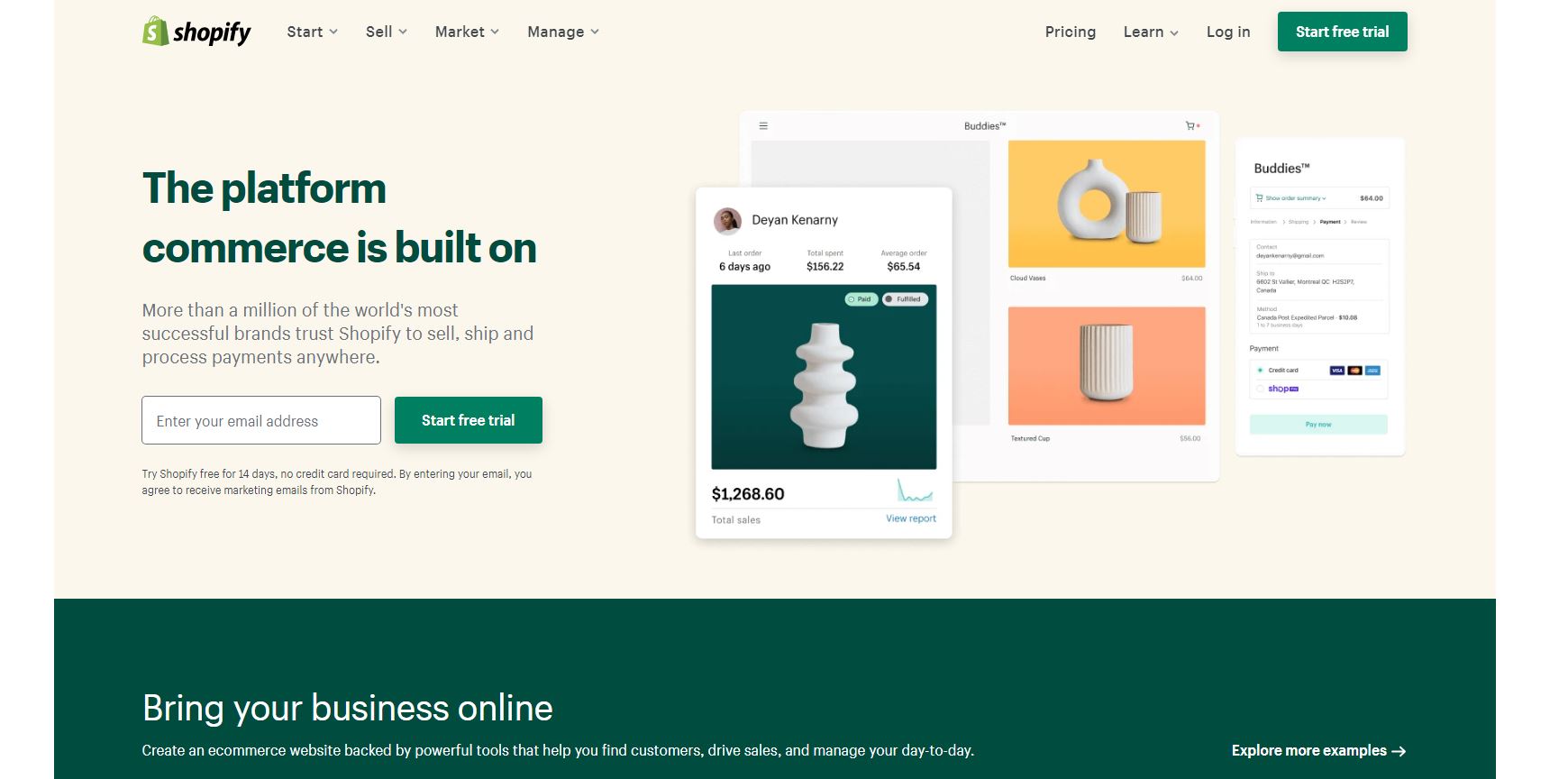
Well for starters, Shopify allows and helps merchants from any part of the world to host and create a website, upload their products, and then collect payments.
Not just that, but it also offers great design, templates, and much more for your online stores, so you can attract visitors and make money online easier.
It powers over 1.2 million merchants all over the world. It is almost as big as other popular tech giants like Twitter.
Shopify simplified all the complicated e-commerce operations and made it easy to use. The simple user interface is the reason, it is preferred all over the world and is so popular.
This online platform runs from your web browser and includes plenty of extra features like collecting taxes, accepting card payments, and running seasonal promotions.
Along with integrations and a lot of extra features, Shopify is also aiming at making online selling a low-cost experience and they have been definitely improving at that.
Shopify has its own App Store that lets you connect with your own online store with different types of tools. For instance, you can connect Shopify to Constant Contact for additional email marketing services.
You can try out plenty of connecting options to support all your needs and requirements with an endless list of connections.
With all the customers Shopify has earned, the revenue they have collected, and the progress they have made, all such things make you join the millions of others who trust them.
Especially when it has been continuously growing with no signs of stopping.
Who Can Use It?
There is no specific group that can use Shopify, but it is more suited for medium-sized and small businesses. Especially because its dashboard is quite user-friendly and simple that you won’t need technical knowledge to create your online business.
Shopify store examples are many including the popular GitHub, Amnesty International, and GE. You can sell anything you want on Shopify, no particular thing or group.
Here is a list of the things people sell on Shopify, to give you an idea:
- Digital: products like audio-books, e-books, etc.
- Services: Consultations and subscriptions like architectural services.
- Physical products: Anything like bags, books, stationery, accessories, clothes, gift cards, handcrafted goods, beauty supplies, etc.
- Memberships: Memberships for Netflix, Amazon Prime, etc can also be sold and bought.
- Classes: Online courses and classes can also be both bought and sold on Shopify.
- Rentals: You can get bikes or cars for rent.
- Tickets: Shopify also offers tickets for events and visiting places like Universal Studios.
Shopify Review
Reading reviews before getting started with any business tool is a good strategy. Here is a list of some niche features that makes Shopify so easy to use:
- Shopify allows you to converse with your customers via Messenger threads. This makes customer service feel much more personalized.
- The ability to add ‘buy’ buttons on any website or blog allows you to use multiple websites without worrying about integration. This feature also allows you to target different audiences at once. If you want, you can show your products directly on eBay or Amazon.
- Social media websites like Facebook hold the power to sell products too and Shopify helps you to use this potential as well.
- For management, you can easily view detailed analytics about your business with built-in traffic and sales dashboards. Importing and exporting CSV files is also a breeze.
What's In Shopify Store?
Shopify offers a lot of other features too and here is a detailed rundown of some of them.
Building your own website can be a daunting task, especially if you don’t have any experience creating one.
And even if you have some experience, it is usually a long and error-prone process. Shopify offers its customers 8 free themes and 64 paid themes.
There is a theme for almost every kind of customer possible. All these themes are mobile-friendly and responsive to different screen sizes. The paid themes on Shopify range from a price of $140 to $180.
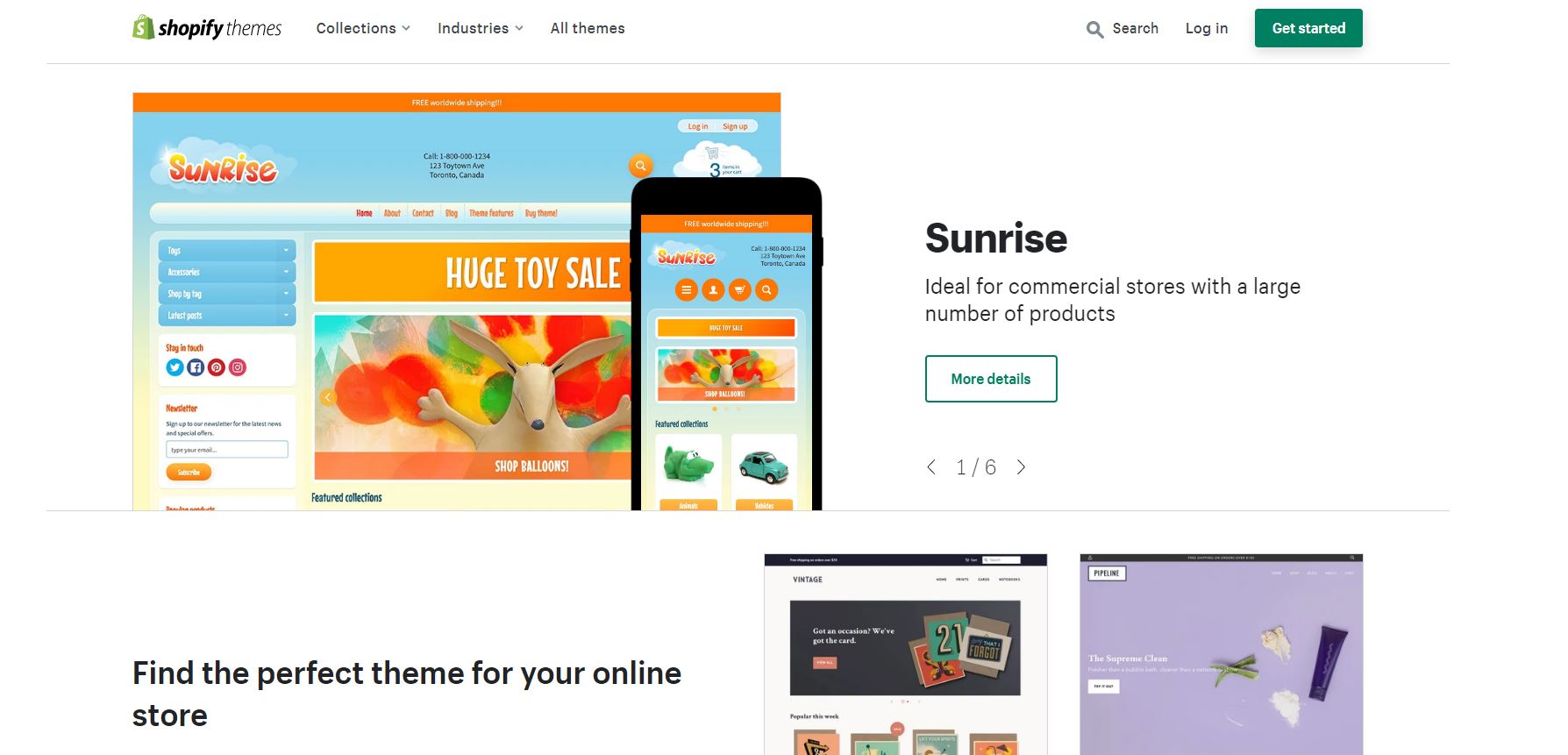
Statistics suggest that a negative experience with mobile compatibility of a website, which might include slow loading times, skewed design, or something else, leads to a 62% less chance of customers buying from you.
Shopify offers its customers well-optimized themes and users can make their decision on a number of factors. Let's say, you want to build a website based on layout and style, you’ll have the following options:
- Wide
- Grid
- Collage
- Editorial
- Row
You can also choose your theme based on the industry you are building the website for.
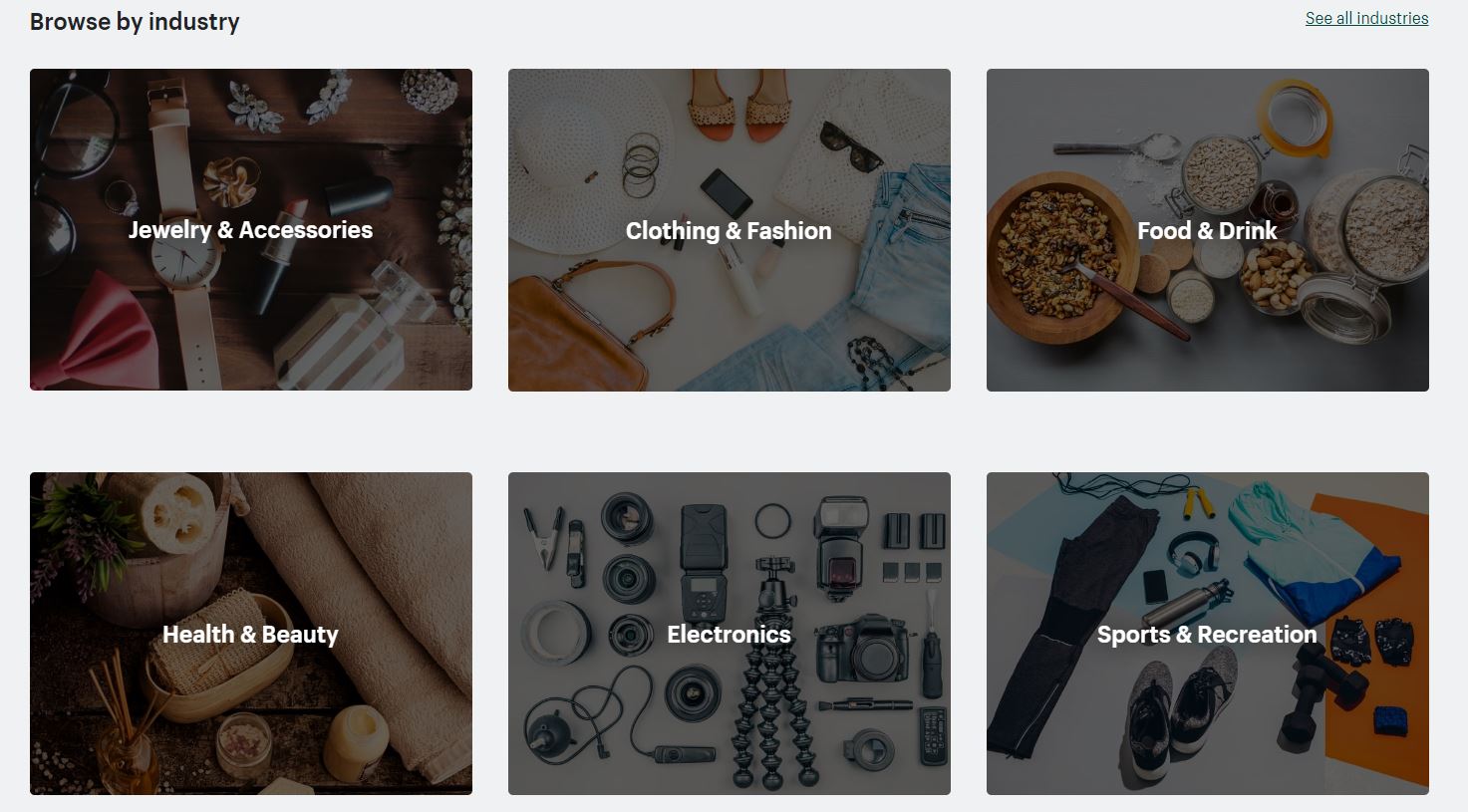
The main features that are included in every theme from Shopify are:
- Customizability
- Search engine optimization
- Mobile compatibility
- Color palettes
Building a website and uploading your products is just the start. Almost everyone can build a website these days, but what makes certain players stand out and make a presence only is a good marketing strategy and good marketing tools.
Even if you have a good marketing strategy, without the right marketing tools, you cannot do anything. But using marketing tools is a very time-consuming job and it requires a lot of effort. For most people, this job of marketing sometimes seems counterintuitive.
This is where Shopify shines like a ray of hope. Spotify offers an abundance of marketing tools that are both powerful and easy to use. It provides a built-in visual assistant called KIT.
This takes care of most of the automation required in your marketing endeavors while you are able to focus on your business. Email marketing is another area of expertise for Shopify.
All you need to do is just log into their app store to download an email marketing app called Constant Contact and you’ll be able to market your business through targeted emails that promote your business and increase revenue.
All the marketing campaigns face the barrier of language. If your potential customer does not understand your language, then there is no point in spending time marketing your services or products to them.
However, Shopify allows you to expand your audience without the barrier of language by offering integration with a translation app like Weglott.
Shopify offers one of the best customer support systems in the market with the Shopify Help Center. It offers customer support through various modes like:
- Social media: Here you can contact customer service through social media platforms.
- 24/7 phone and live chat support: The customer support is available 24/7 and you can even talk to them live.
- Responsive community forum: They have a community forum where people post queries and other people answer them. This was a helpful community.
- Extensive video tutorials: They even have video tutorials to refer to.
- Specialist support: If your issue is not resolved, they may offer a specialist to help you directly.
- Email support: Shopify can get back to its customers through the mail.
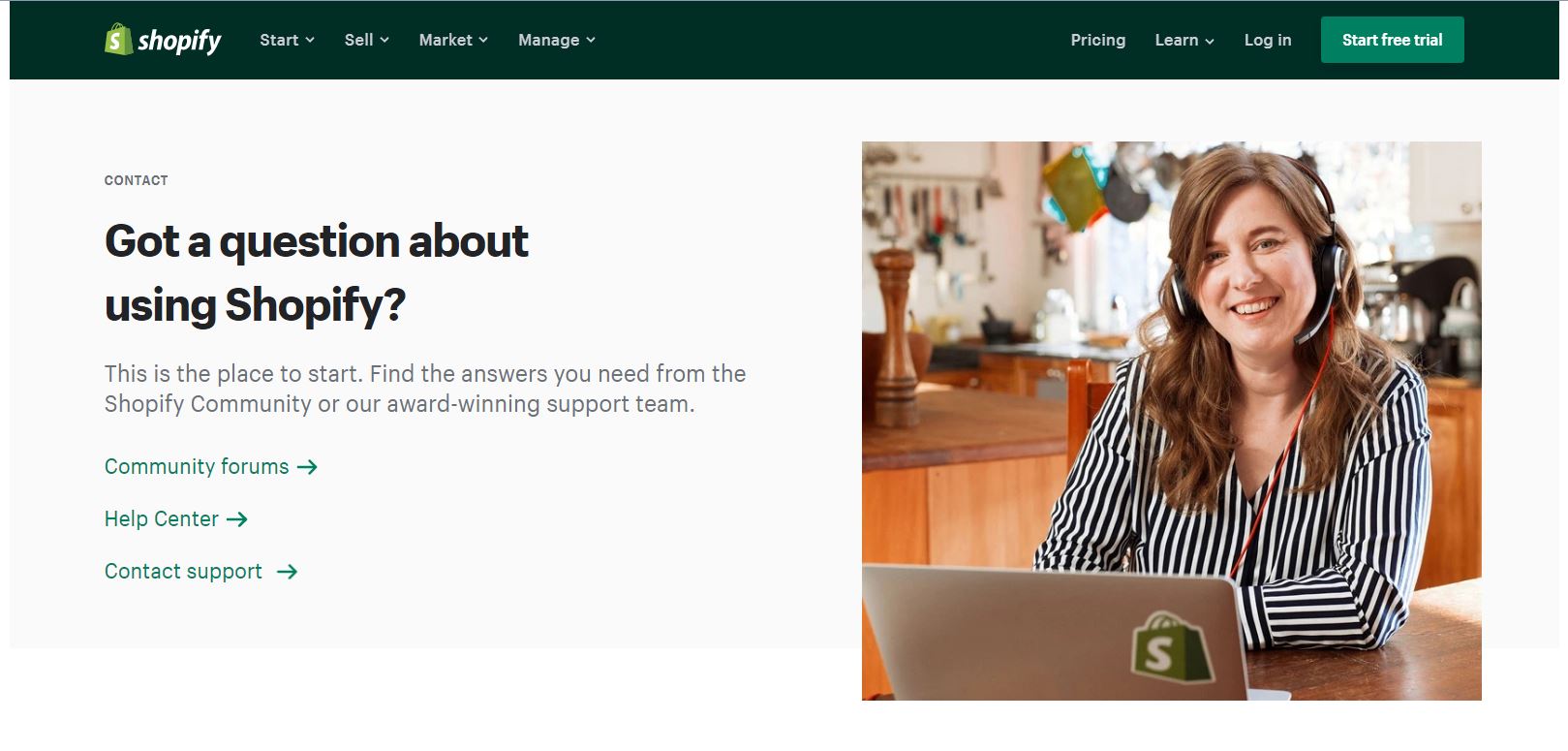
They have a large database of FAQs where you can find answers to most of your questions. And if that doesn’t help, you can always contact the Shopify Contact Center.
4. Blogging
Blogs are a very easy and effective way to generate traffic on your website. Many of the leading brands use this strategy to promote their brand on their own websites by writing blogs and then sharing them over the internet.
Shopify is one of the few platforms that offer in-built blogging capabilities. It allows you to manage your blog posts and makes sure that they attain maximum visibility.
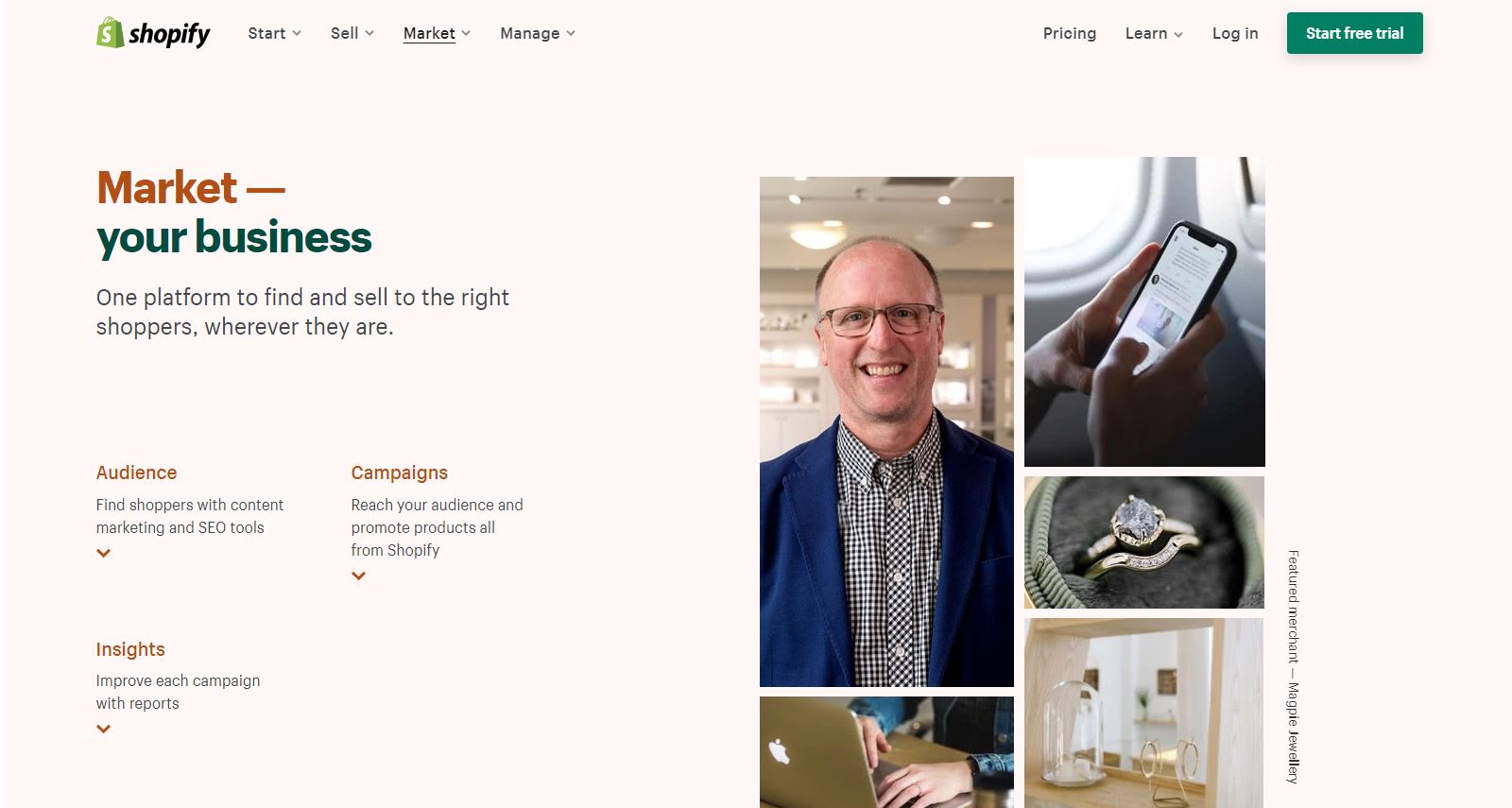
However, Shopify blogs don’t allow you to use any other categories except for tags. There is no content versioning either. You can use Disqus to supplement Shopify blogs.
5. Reporting
One way to improve upon your business is to understand it first. This is done by collecting and analyzing data on your website and making reports that provide you with the right metrics.
Shopify offers some reporting options that everyone should be using. Some topics on which you can view your reports are:
- Sales
- Customer
- Marketing
- Search data
- Data analytics
- Finance
- Taxes
- Abandoned cart reports
Shopify offers reporting capabilities available in all of its packages. However, the level of reporting progressively gets better as you move up the pricing packages.
While the lower packages allow you to visualize all the data and perform basic reporting, the quality and power of reporting on top-tier plans allow you to drive deeps into analytics while exporting as many files as possible.
6. Dropshipping
Dropshipping is an online model of business in which a seller does not need to worry about warehousing and inventory.
The seller works with a third-party Dropshipping supplier or manufacturer who takes care of warehousing, inventory management, and shipping. The seller only takes the order from the customer and relays it to the Dropshipper who manages the rest.
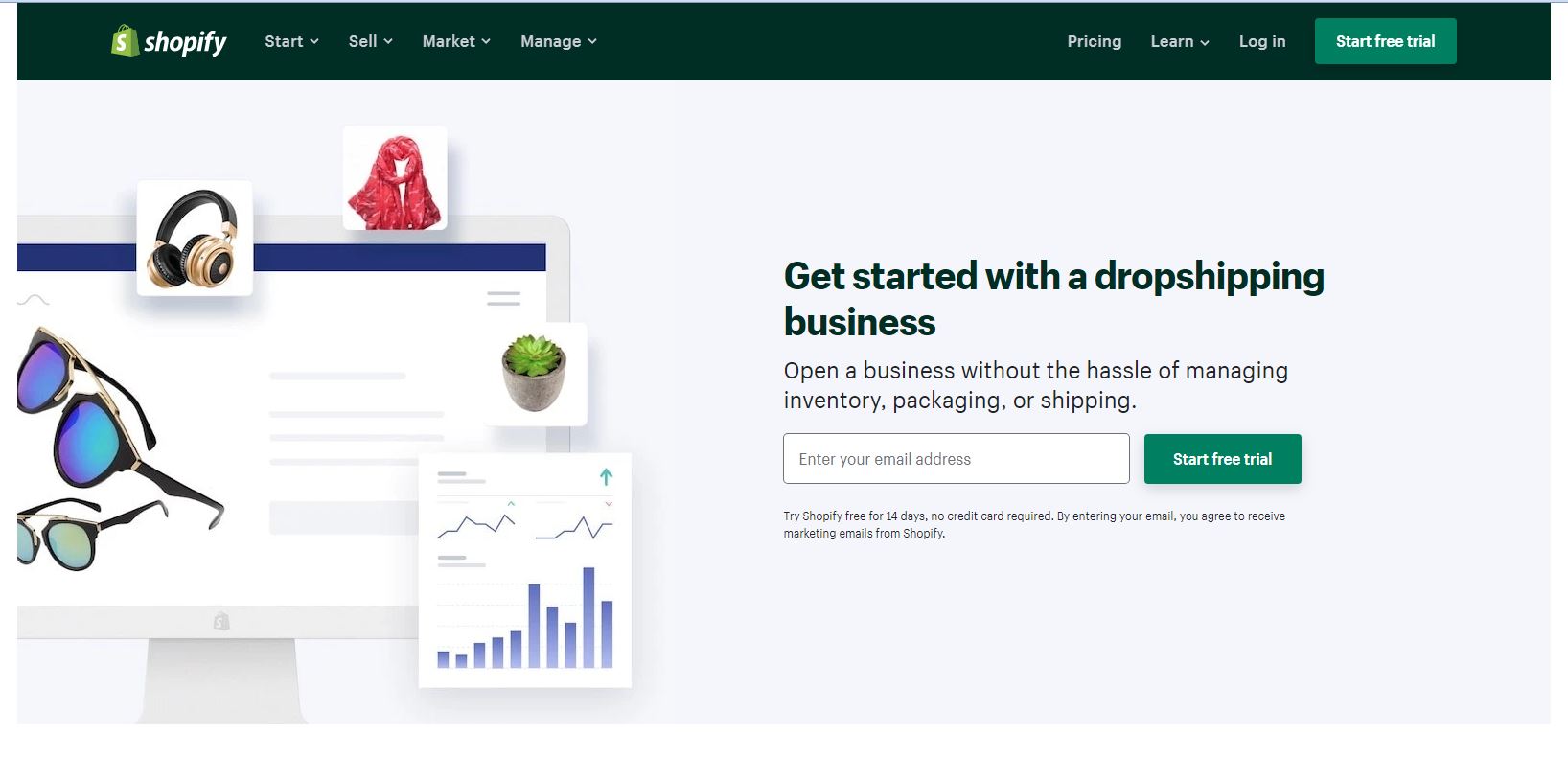
Shopify offers a very easy Dropshipping integration. It offers apps from its app store to let sellers take advantage of this business model.
Apps like Socket and Oberlo allow users to automatically sync their websites with the warehouses. They can also find new products to sell and export them directly to their store.
Shopify offers a huge library of apps to choose from its app store that allows you to extend the functionality of your website without looking for third party integrations. The App Store has around 3,000 apps.
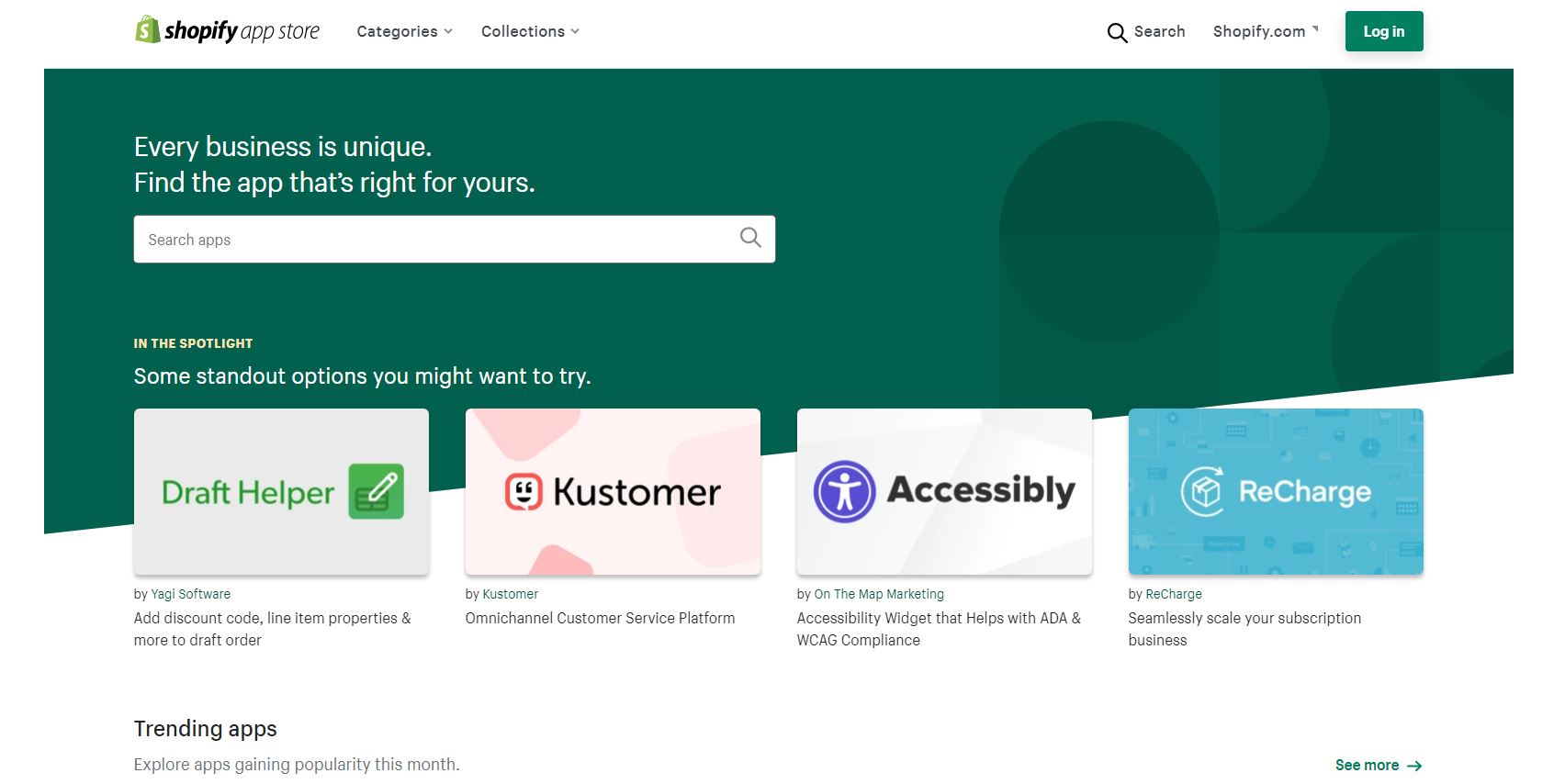
These apps provide functionality in areas of:
- Email marketing solutions
- Payment gateways
- Marketing tools
- Data visualization and real-time analytics
- Shipping and third-party logistics
- Taxes
- Finance and accounting software
- Store design
- Orders and shipping
Shopify’s SEO features include editing a few things like:
- Meta Descriptions
- Page titles
- 301 Redirect
The URLs are customizable too but since Shopify keeps URL prefixes on every webpage, it can become problematic because Google prefers simple URLs.
The SSL certificates and HTTPS that Shopify offers provide security for your web page and secure payments. Even though Shopify is a quite powerful tool, it's SEO features, it’s not as good as BigCommerce.
9. Abandoned Cart Recovery:
Abandoned cart recovery is a feature that allows merchants to send abandoned cart emails and alerts to users who have items in their carts that they never tend to, but also have left the site.
These constant reminders and emails increase sales and customer retention. Shopify has an abandoned cart recovery feature in all their plans.
This isn’t the case with other platforms like BigCommerce, where you will have to pay $79/month for the Pro Plan and then get this feature available.
An option to automate this feature is also available, so whenever a user abandons his cart, an email is sent to him automatically by Shopify. You can also choose how long you want to wait before sending these emails, like an hour, 10 hours, or a day.
Of course, you know your work best, and based on that you decide which feature is the most beneficial to you and your business.
Point of sale(POS) is a feature that is more than useful when you want to handle a couple of pop-up shops, temporary market shops, and stores.
The POS system makes it easy since it gets hard and challenging to keep track of all that inventory because you also have to redo your calculation over and over.
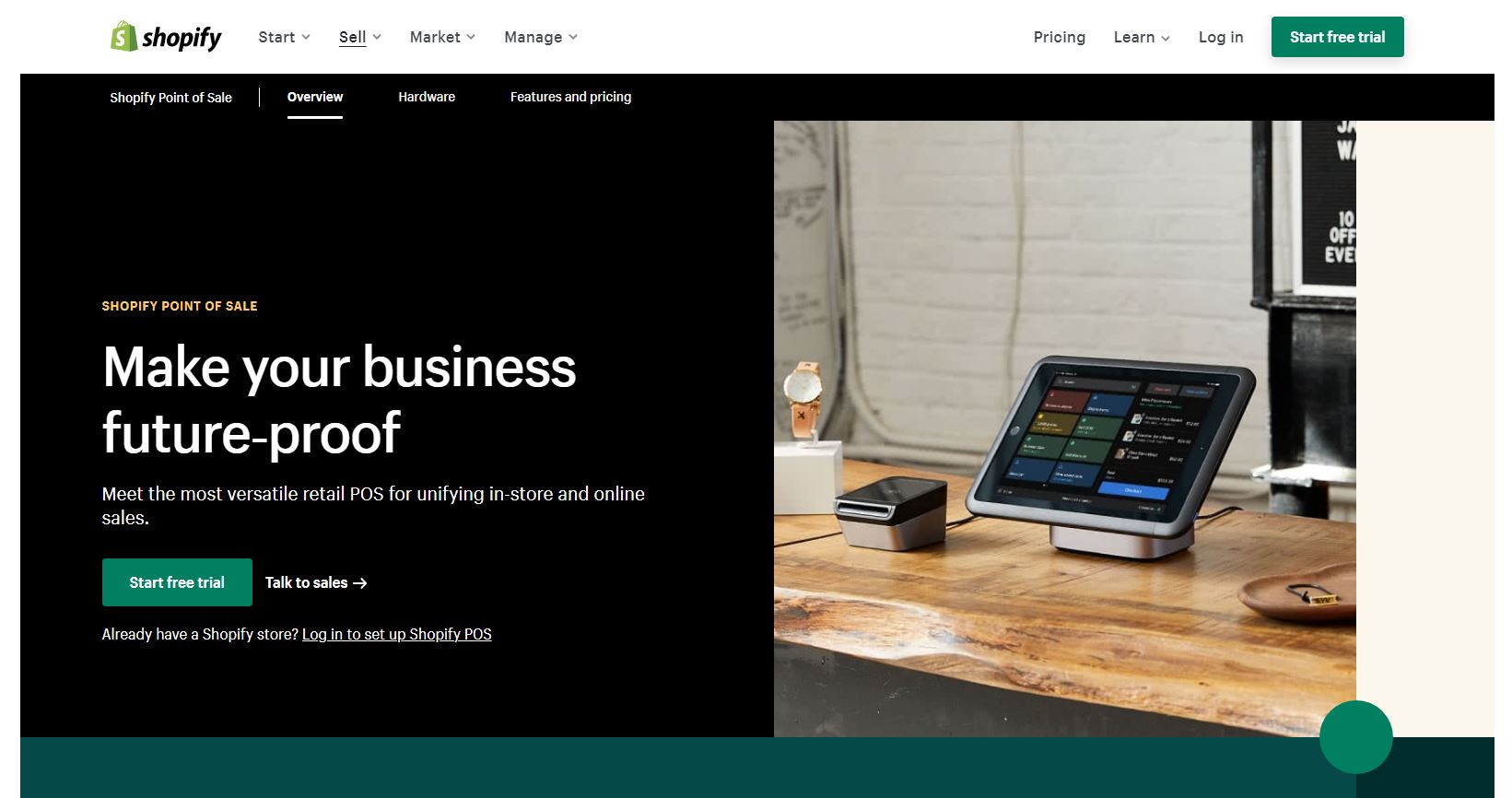
Shopify offers this feature to all the plans excluding the ‘Basic’ and the ‘Lite’ plan. You can also use features like:
- Registering shift.
- Extensive hardware customer support
- Paypal and Amazon pay support
- Multiple selling sites.
Even though Shopify has its own payment system and it pushes users to try it, it costs no transaction fees. It still isn’t as considerate as BigCommerce here because it charges transaction fees if you use third-party payment pipelines.
Shopify: Pros & Cons
Pros
Cons
Shopify offers one of the most extensive pricing packages in the market. Their pricing plans encompass users from all economic backgrounds. The best bit is that all these plans offer great value and a variety of features.
They have three standard pricing plans that include:
- Basic Shopify
- Shopify
- Advanced Shopify
The price of these plans ranges from $29 per month to $299 per month when paid monthly. When the fees are paid annually, users get a 10% discount.
Also, you don’t necessarily need to buy any packages to get the hang of this software. Shopify offers a 14-day free trial which allows you to checkout things before you make your decision of buying the product.
Basic Shopify
Basic Shopify offers features like the ability to build an online store with unlimited products. The ability to sell unlimited products makes Shopify extremely scalable without having to spend an extra penny.
Even in the basic plan, you get good customer support that is available 24/7. Customer support helps you debug issues quickly and keep your workflow as efficient and productive as possible.
Under the basic plan, you can even create manual orders and discount codes that can boost the sales on your online shop.
A free SSL certificate is also provided to your website for credibility and security from threats around the internet. This is beneficial for both your customers and your business.
Here is a brief rundown of the features included in Basic Shopify.
- Online store
- Unlimited products
- 24/7 customer support
- Manual order creation
- Discount codes
- Free SSL certificate
Shopify
The second tier of Shopify packages offers all the above-mentioned packages and some additional features like ‘gift cards’ and ‘professional reports’.
While gift cards are there to only cater to your customers; the ability to create professional reports helps you keep track of your business.
This allows you to create better solutions to the problems faced by your business while giving you the opportunity to run and expand your business efficiently.
Advanced Shopify
The third plan called the ‘Advanced Shopify’ is built on the already impressive list of features and offers ‘advanced report builder’ and third-party calculated ‘shipping rates’ as well.
It also includes highly competitive shipping discounts from logistics providers like USPS, UPS, and DHL Express.
The platform also offers some additional plans for those users whose needs are more specific:
1. Shopify Lite: Shopify Lite is for users with limited sales who still want to take their business online without spending extra cash. Shopify Lite allows users to create an online store at a price of $9 per month.
The features of this plan include a basic website with simple navigation and buying buttons. It also allows its users to expand their business through social channels like Facebook, Twitter, and more.
2. Shopify Plus: Shopify Plus is for those users whose business demands more custom solutions. These types of businesses require extra features and white-glove Shopify support.
Shopify Plus offers all the features of previous plans and extra features like
- Extensive API support
- Server uptime
- Military-grade data security features
- Dedicated SSL address
- Holistic white glove service
Shopify offers a wide range of payment options. They offer more options than most of their customers. They have over 100 payment providers that include the likes of Stripe, 2Checkout, PayPal, or Authorize.
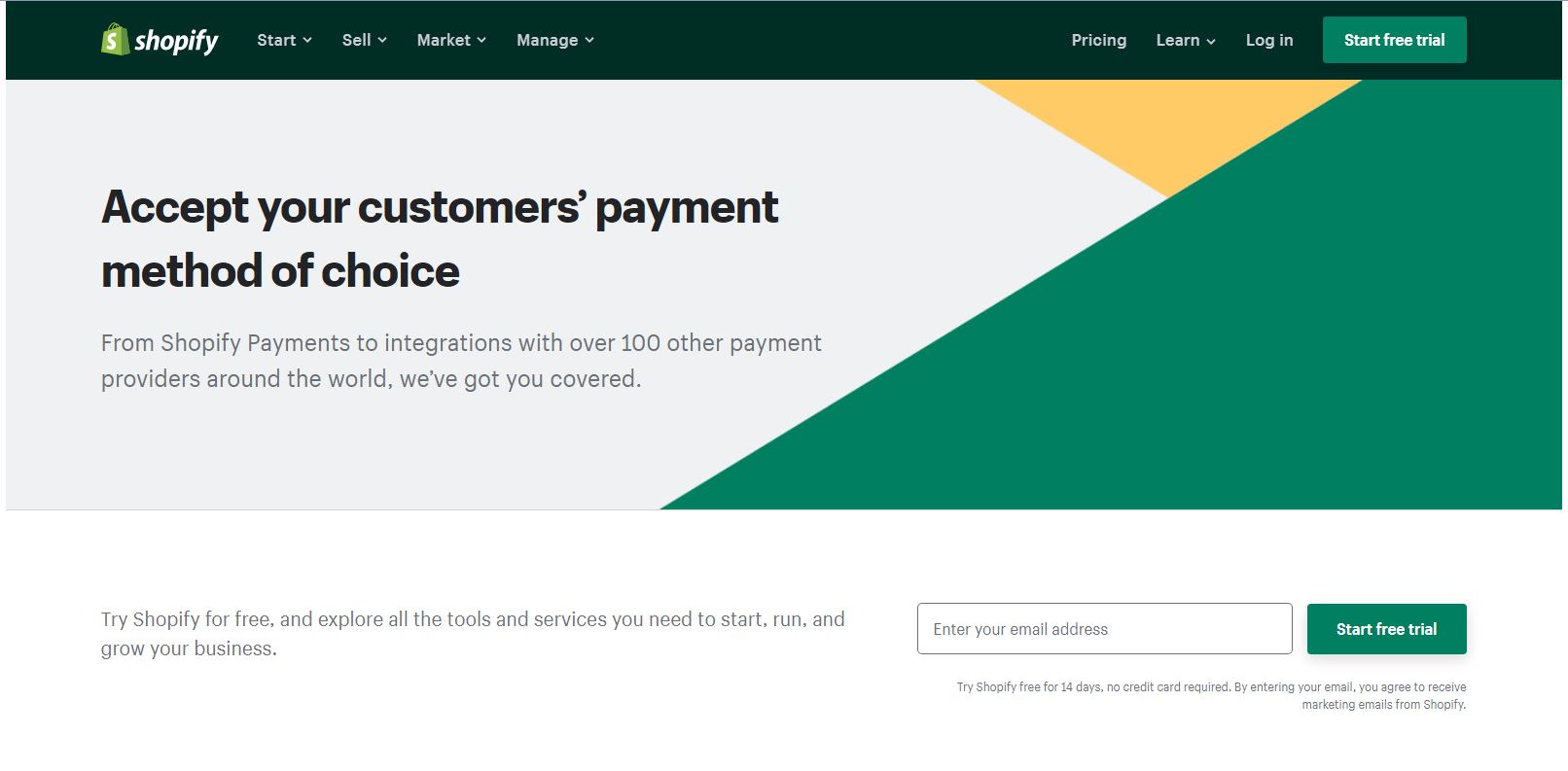
They also have their payment pipeline, called Shopify Payments which is powered by Stripe. Having their payment system gives them some leverage over their customers.
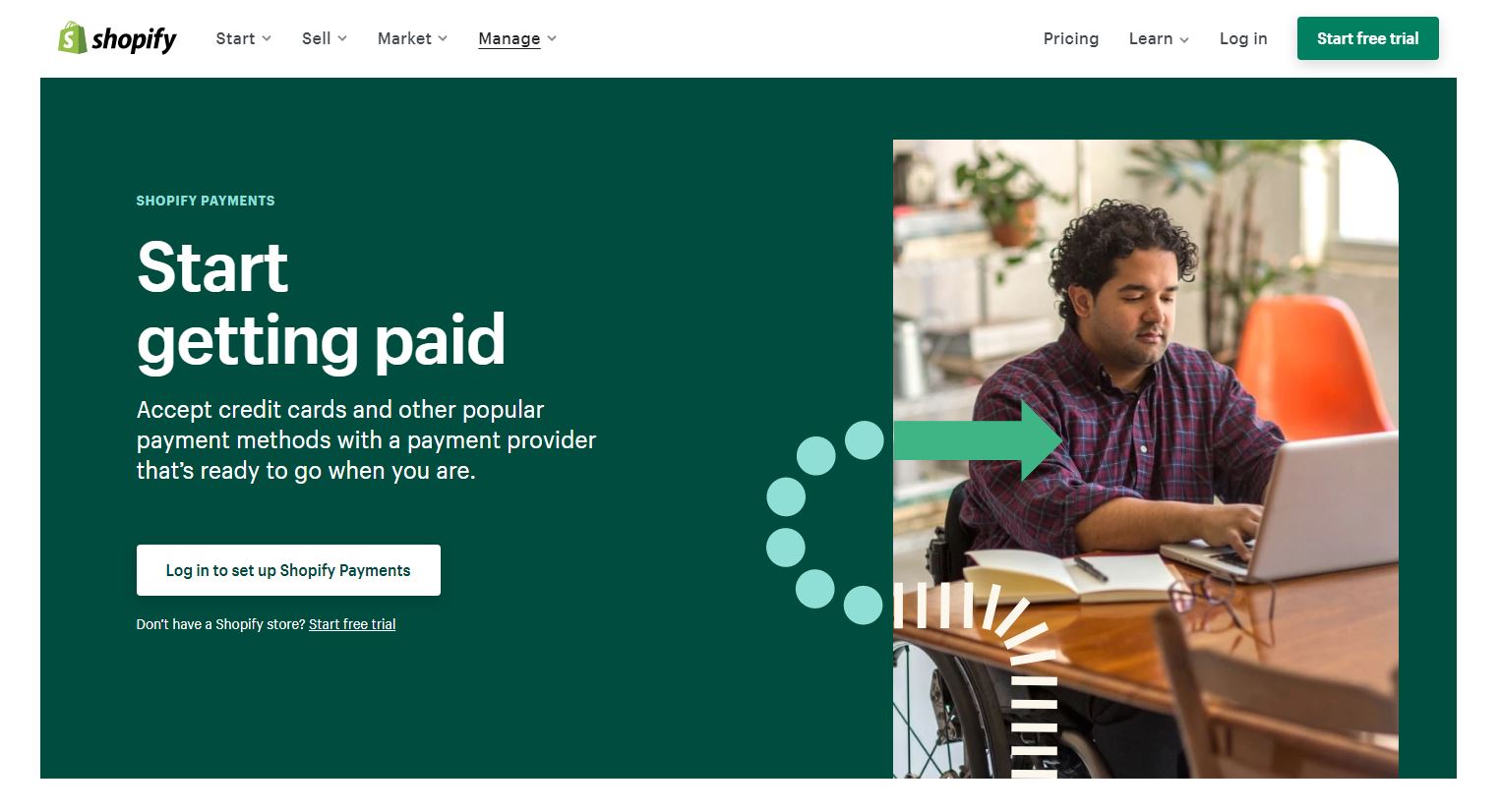
While you can pay using any payment channel, a big drawback is that Shopify charges you extra transaction fees if you don’t use Shopify Payments.
They urge their customers to use their service by charging 2%, 1%, or 0.5% depending on the plan a user is subscribed to.
The transaction fee also varies from country to country and can be anywhere from 1.6% in the UK to around 3% in the US per transaction. Sometimes an extra 30 cents is also charged for each country.
While a small transaction fee wouldn’t have been a big issue since users could just use Shopify Payments, but this service is not available in every country.
This means that customers from certain countries will always have to pay extra. Currently, Shopify Payments is available in countries like the US, Canada, UK, Ireland, Australia, New Zealand, Germany, Singapore, Japan, and Hong Kong.
While there are rumors that the service will soon start in other countries too, the service is still unavailable in those countries.
A very beneficial feature of using Shopify is the option to enable manual payment methods. These methods include cash on delivery, bank deposits, or money order.
This allows customers to easily pay for their orders without the extra commission of using a service other than Shopify Payments.
This reduces the burden on customers since manual payments don’t incur any commissions to Shopify. To make the final decision, just compare their prices with other platforms.
The worst thing about taxes is that they are too complicated. It is not the fact that we have to calculate them that gets to us, it's the fact that calculating them is just so damn complicated.
There are a lot of tools out there that allow you to calculate taxes on your products and these products have a ton of customizable features.
The major problem with these tools is not their lack of customization but the overabundance of it. Taxes are complicated and when you are given too many choices, you tend to lose your way.
The best thing about how Shopify handles task is that it doesn’t do too much. It keeps the basics in check and makes your life easier without doing something extraordinary.
The benefit of this is that it doesn’t require any intricate understanding of taxes to set it up and its works efficiently.
Its features include but aren’t limited to some listed below:
- It allows you to display the price including or excluding taxes.
- It automatically calculates tax based on ZIP code, but only for US-based stores.
- You can add manual tax settings for countries or regions.
While selling products in Europe, you can customize your tax settings to match European legislation. You can even help your customers’ shop VAT-free, using reverse charge-mechanism.
However, this will require the use of an external app.
How To Get Started?
After reading this article if you are considering to start with Shopify, make sure you sign up for their 14-day free trial. In fact, do this before starting with anything.
This gives you a chance to explore and test it out before subscribing and getting started with it. Before getting access to the trial, they won't ask you for your credit card information in the signing up process.
You will just need to answer a few questions about your business, like what kind of business you run and other business-related questions.
During your free trial, make sure you have tested and tried every part of Shopify’s software. Create marketing campaigns, add one or two applications, add products, design, and change the storefront view.
Check out the necessary advanced features like abandoned cart notifications, filtered search, pop-up promos, etc. Try all the things you would be doing to check if Shopify can handle all your daily tasks.
Check out Shopify’s App Marketplace that offers more than 3,500 extensions and helpful applications that can come in handy and fill any gaps that might be found in the long run.
After this, if you are sure that Shopify is the right choice for you, select the pricing package that is best for you. Search on how to set up a Shopify store in detail, and if you ever face any problems and run into trouble, Shopify’s support is always there to help.
Shopify Alternatives
1. BigCommerce
While BigCommerce and Shopify seem to operate on the same level in terms of their functionality and flexibility, they do have some minor differences.
And these minor differences become crucial to your business. In terms of SEO, BigCommerce takes the lead this can be the difference in the top stop in a competitive market.
Even though BigCommerce does not charge you any transaction fees, it does put you on a higher pricing plan as you hit higher thresholds in your sales.

2. WooCommerce
Ease of use and flexibility is something that people want in a single package but these terms tend to hinder each other.
Higher the ease of use for the end user, flexibility tends to drop and vice versa.
WooCommerce is most famous for its flexibility and most people use it when they need a multilingual website.
However, to use WooCommerce, you need to be comfortable with FTP, MySQL and plugin updates.

Wix Ecommerce targets a different audience. Its primary focus is on small stores that need better looking websites with a blog and added shopping cart.
The platform is beginner friendly with an easy-to-use interface.
Don’t take away anything from the functionality it offers though and the platform is jam packed with features.
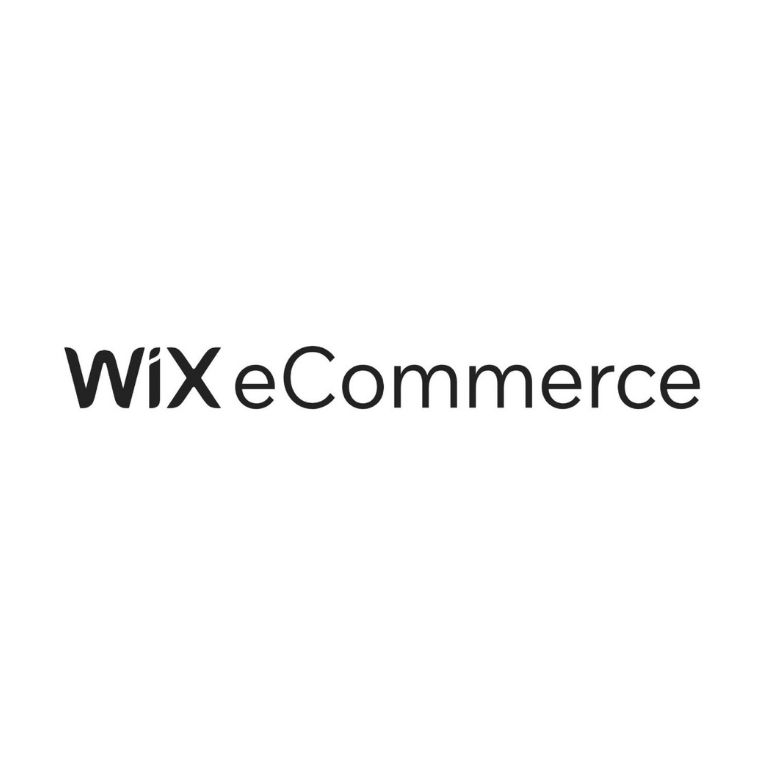
Conclusion
Shopify is the best platform, to begin with especially if you are a small or mid-sized business.
They have spread and grown so much since 2006 and have succeeded in helping so many businesses and merchants to set up their stores and get started with an online business.
They have aimed to make it an easy and simple process and have succeeded particularly in that.
Being the most successful e-commerce platforms with their huge user base, they have a bright future and don’t seem to be turning down at any point.
So, starting off with them is a smart and considerate decision that will surely prove to be useful. Good luck with your decision!
Frequently Asked Questions
You might have some questions even after all this. So here are a few most frequently asked questions about Shopify.
Yes, Shopify is great for beginners because it is totally easy to use and if you still find yourself confused, there are plenty of videos and guides available.
Their amazing customer support is always available to clear out any error you might be experiencing. The easy-to-use interface allows you to get started in no time to promote, sell, and ship your products.
It is low of cost and you can get your whole store running with about $9/month.
Data security is the number one priority of any online business and that is what Shopify makes sure to keep data security as it’s point of focus.
For businesses, becoming a victim of a data breach means losing credibility and customers. Shopify offers a very robust security system.
It regularly scans the website and automatically updates new safety features and patches any vulnerabilities. Shopify complies 100% with all the regulatory requirements of the industry.
Some of its main security features are:
- SSL certificates: All the plans offered by Shopify have SSL certifications incorporated in them.
- PCI compliant: This means that they follow all regulations and provide industry-standard security for making online payments through cards.
- Protects cardholder data: It protects the personal sensitive data of the cardholder.
- Access control measures: It has a system for strong access control that doesn’t allow unauthorized users to pass through.
However, no amount of security makes you completely immune to cyber breaches. Thus, it is a good idea to always back up your data.
There are a lot of apps available in the Shopify store to help you backup your data. Rewind is a good example.
Shopify is easy to use so YES! The basic configuration of the store can be completed in a short span of time.
However, if you are not familiar with the concepts of HTML, CSS, JavaScript and other packages like that, it’d be better to ask someone for help with your ideas and objectives for the store. One can easily get lost in code if they don’t know what they’re looking for.
